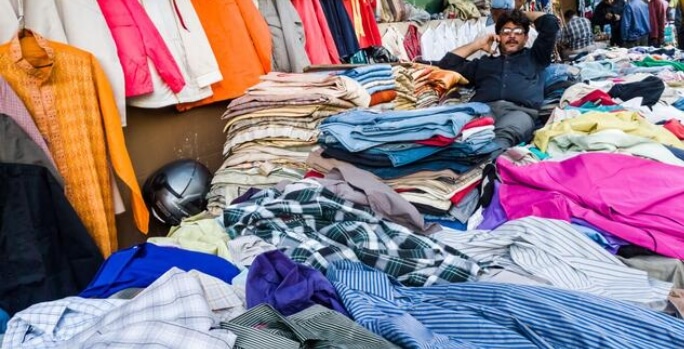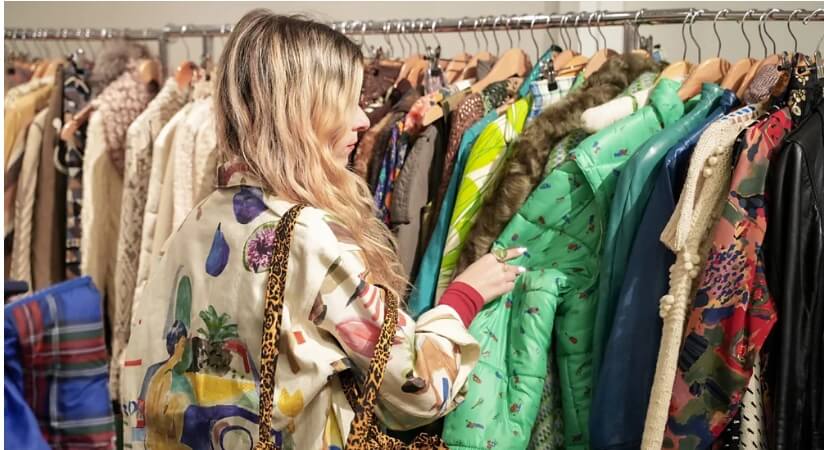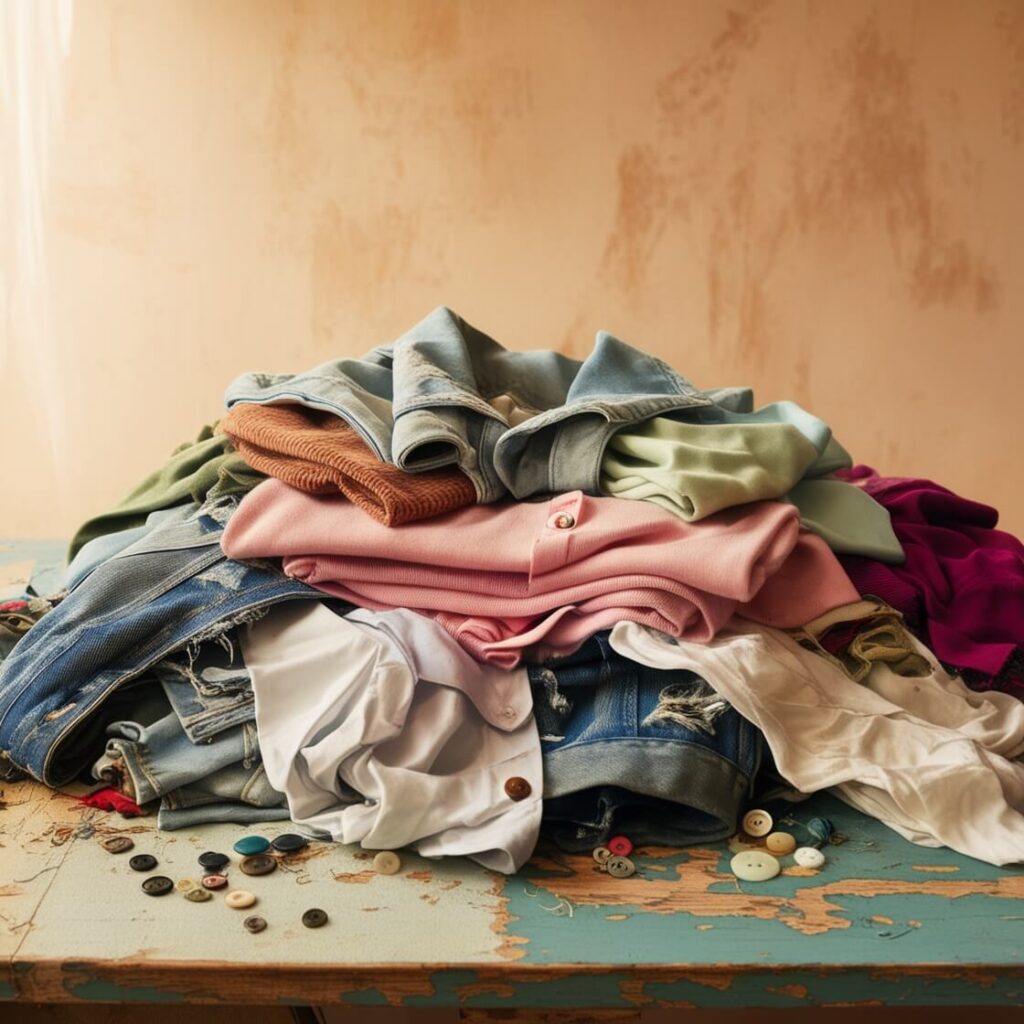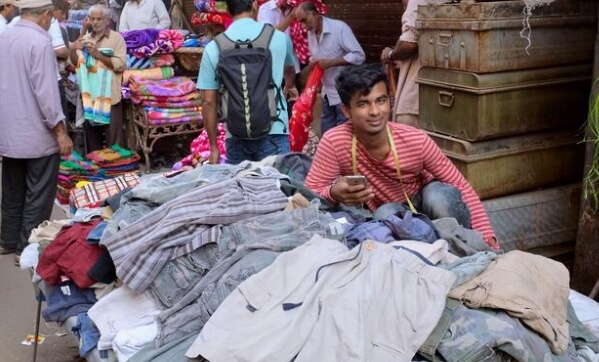The rise of second-hand shopping marks a significant departure from traditional retail practices. In a world where sustainability and individuality are increasingly prized, consumers are actively seeking out second-hand options. This article explores the underlying trends and motivations driving this change, providing valuable insights for businesses and consumers alike.

The Impact of COVID-19 on Consumer Behavior
The COVID-19 pandemic has fundamentally altered consumer behavior, leading to a marked increase in second-hand shopping. As many faced economic uncertainty and changing priorities, consumers began to seek more affordable alternatives to traditional retail. This shift was driven by a desire to save money while still obtaining quality goods. Additionally, lockdowns and social distancing measures prompted people to explore online marketplaces and thrift stores more than ever before, making second-hand shopping a viable and attractive option. As a result, this trend not only reflects a practical response to economic challenges but also signals a growing awareness of sustainability and the environmental impact of consumer choices.
Analyzing Changes in Spending Habits
In recent years, spending habits have shifted dramatically, with a notable trend toward second-hand shopping. As consumers reevaluate their financial priorities, many are opting for pre-owned items as a cost-effective alternative to new purchases. This shift has been amplified by the economic uncertainties brought about by the pandemic, prompting individuals to seek savings without compromising on quality. Second-hand shopping not only offers budget-friendly options but also encourages a more thoughtful approach to consumption, reflecting a growing awareness of personal financial health.
The Shift Toward Sustainability
The increasing emphasis on sustainability has played a pivotal role in the rise of second-hand shopping. As consumers become more conscious of their environmental impact, they are actively seeking ways to reduce waste and promote circular fashion. Second-hand shopping aligns perfectly with these values, allowing individuals to extend the lifecycle of clothing and accessories while minimizing their carbon footprint. This shift not only fosters a more sustainable retail environment but also highlights a collective movement toward responsible consumerism, as people recognize the importance of making eco-friendly choices in their purchasing decisions.
Motivations Behind Second-Hand Shopping
The motivations behind secondhand shopping are varied and compelling, driving an increasing number of consumers to explore pre-owned options. One of the primary reasons is cost savings, as second-hand shopping often provides high-quality items at a fraction of the retail price. Additionally, many shoppers are drawn to the unique and eclectic finds that thrift stores and online platforms offer, allowing them to express their individuality and personal style. Furthermore, the growing awareness of environmental issues has made sustainability a key motivation, with consumers recognizing that second-hand shopping is a powerful way to reduce waste and support eco-friendly practices. Overall, these motivations not only highlight the practical benefits of buying second-hand but also reflect a broader cultural shift toward more mindful and responsible consumer behavior.

Cost Savings and Budget Consciousness
Cost savings and budget consciousness are two primary drivers behind the surge in second-hand shopping. As consumers face rising prices and economic uncertainty, many are turning to pre-owned items as a practical solution. Second-hand shopping offers significant savings, allowing individuals to purchase high-quality products at reduced prices. This shift not only helps consumers stretch their budgets but also encourages a more thoughtful approach to spending, as people prioritize value over brand-new items. Consequently, second-hand shopping has become an appealing option for those looking to maintain their lifestyles without overspending.
Unique Finds and Vintage Appeal
One of the most exciting aspects of second-hand shopping is the opportunity to discover unique finds and vintage treasures. Unlike traditional retail environments, thrift stores and online platforms often house a diverse array of items, each with its own story and character. Shoppers are increasingly drawn to the thrill of the hunt, seeking one-of-a-kind pieces that reflect their personal style. This appeal for unique and vintage items not only enhances the shopping experience but also fosters a sense of individuality, as consumers take pride in curating their wardrobes with distinctive, pre-loved fashion.
Environmental Considerations
Environmental considerations are increasingly influencing consumer choices, with second-hand shopping emerging as a sustainable alternative to fast fashion. As awareness of the fashion industry’s environmental impact grows, many individuals are seeking ways to reduce their carbon footprint and minimize waste. Secondhand shopping plays a crucial role in this movement, allowing consumers to extend the lifecycle of garments and accessories while supporting eco-friendly practices. By choosing pre-owned items, shoppers actively participate in a more sustainable economy, making a positive contribution to the planet and promoting responsible consumerism in their daily lives.
The Growth of Online Second-Hand Platforms
The growth of online second-hand platforms has revolutionized the way consumers engage in second-hand shopping. With the rise of digital marketplaces, accessing pre-owned items has never been easier. Consumers can browse vast selections of clothing, accessories, and home goods from the comfort of their homes, making second-hand shopping more convenient and accessible than ever. These platforms not only connect sellers and buyers but also foster a sense of community around sustainable practices. Additionally, features like user reviews and ratings help build trust, encouraging more people to explore second-hand options. As online second-hand shopping continues to gain traction, it represents a significant shift in consumer behavior, promoting a culture of reuse and sustainability in the retail landscape.
Popular Platforms and Marketplaces
The emergence of popular platforms and marketplaces has significantly boosted the appeal of second-hand shopping. Websites and apps such as ThredUp, Poshmark, and Depop have created user-friendly environments where consumers can easily buy and sell pre-owned items. These platforms not only offer vast selections of clothing and accessories but also provide detailed descriptions and images, enhancing the shopping experience. As a result, second-hand shopping has become a mainstream choice for budget-conscious and environmentally-aware consumers alike. This shift is reshaping the retail landscape, making it easier for individuals to participate in a circular economy.
The Role of Social Media in Promoting Second-Hand Goods
Social media plays a pivotal role in promoting second-hand shopping, transforming the way consumers discover and engage with pre-owned items. Platforms like Instagram and TikTok have become powerful tools for showcasing unique finds, thrift hauls, and sustainable fashion tips. Influencers and everyday users alike share their experiences with second-hand shopping, inspiring others to embrace this eco-friendly alternative. Through visually engaging content and community interactions, social media not only raises awareness about the benefits of second-hand goods but also fosters a vibrant culture of sustainability and creativity, encouraging more people to participate in second-hand shopping.
Challenges and Considerations
While second-hand shopping offers numerous benefits, it also comes with its own set of challenges and considerations. One of the primary concerns for consumers is quality assurance, as pre-owned items may vary significantly in condition. Buyers often worry about potential defects or wear that may not be clearly communicated in listings. Additionally, overcoming stigmas associated with used items can be a hurdle; some individuals may hesitate to embrace second-hand shopping due to perceptions of cleanliness or value. However, many platforms are addressing these challenges by implementing strict quality checks and providing detailed descriptions. By acknowledging and addressing these issues, the second-hand shopping community can foster greater trust and encourage more consumers to explore the advantages of purchasing pre-loved goods.

Quality Assurance in Second-Hand Shopping
Quality assurance is a critical aspect of second-hand shopping that directly impacts consumer confidence. Many buyers are concerned about the condition of pre-owned items, which can vary widely from one piece to another. To address this issue, reputable online platforms and thrift stores have begun implementing rigorous quality checks and providing detailed descriptions of products. These measures ensure that customers receive high-quality items that meet their expectations, enhancing the overall shopping experience. By prioritizing quality assurance, second-hand shopping can attract more consumers who might otherwise be hesitant to purchase used goods.
Overcoming Stigmas Associated with Used Items
Overcoming stigmas associated with used items is essential for promoting the benefits of second-hand shopping. Many people still harbor misconceptions about the cleanliness and value of pre-owned goods, often viewing them as inferior to new products. To combat this perception, advocates for second-hand shopping emphasize the environmental and economic advantages, showcasing how choosing used items can contribute to sustainability and savings. Educational campaigns and testimonials from satisfied shoppers can further help to change public attitudes, illustrating that second-hand shopping is not only a smart choice but also a fashionable and responsible one. By addressing these stigmas, the second-hand shopping movement can continue to grow and thrive.
Future Trends in Second-Hand Shopping
The future of second-hand shopping is poised for exciting developments as consumer demand for sustainable options continues to rise. As technology advances, we can expect to see more innovative online platforms that enhance the shopping experience, making it easier for buyers to find high-quality pre-owned items. Additionally, the integration of augmented reality (AR) and artificial intelligence (AI) may transform how consumers interact with second-hand goods, allowing for virtual try-ons and personalized recommendations. Furthermore, as the cultural shift towards sustainability gains momentum, second-hand shopping will likely become even more mainstream, attracting a broader audience. This evolving landscape not only highlights the adaptability of the retail market but also reinforces the importance of second-hand shopping as a vital component of a more sustainable future.

Predictions for the Next Decade
As we look ahead to the next decade, second-hand shopping is expected to become an integral part of mainstream retail. With increasing awareness of environmental issues and a growing preference for sustainable practices, more consumers will likely embrace pre-owned goods as a viable alternative to fast fashion. Predictions suggest that the market for second-hand items will continue to expand, fueled by younger generations who prioritize ethical consumption and unique finds. This shift will not only reshape consumer habits but also encourage brands to adopt circular business models, further solidifying the role of second-hand shopping in a sustainable economy.
The Role of Technology and Innovation
Technology and innovation are set to play a crucial role in the evolution of second-hand shopping, enhancing the overall consumer experience. Advancements in artificial intelligence and machine learning will enable platforms to offer personalized recommendations based on individual preferences, making it easier for shoppers to discover items they love. Additionally, mobile apps and social media integration will facilitate seamless transactions and community engagement, fostering a sense of connection among buyers and sellers. As these technological innovations emerge, they will not only streamline the second-hand shopping process but also empower consumers to make informed and sustainable choices, reinforcing the appeal of pre-owned goods in the modern marketplace.






